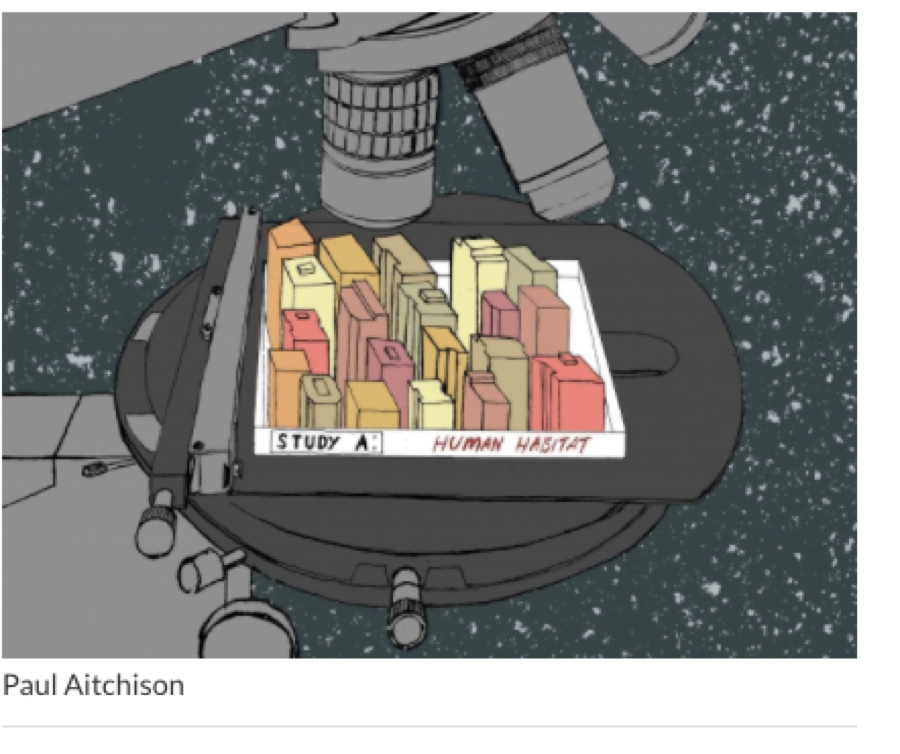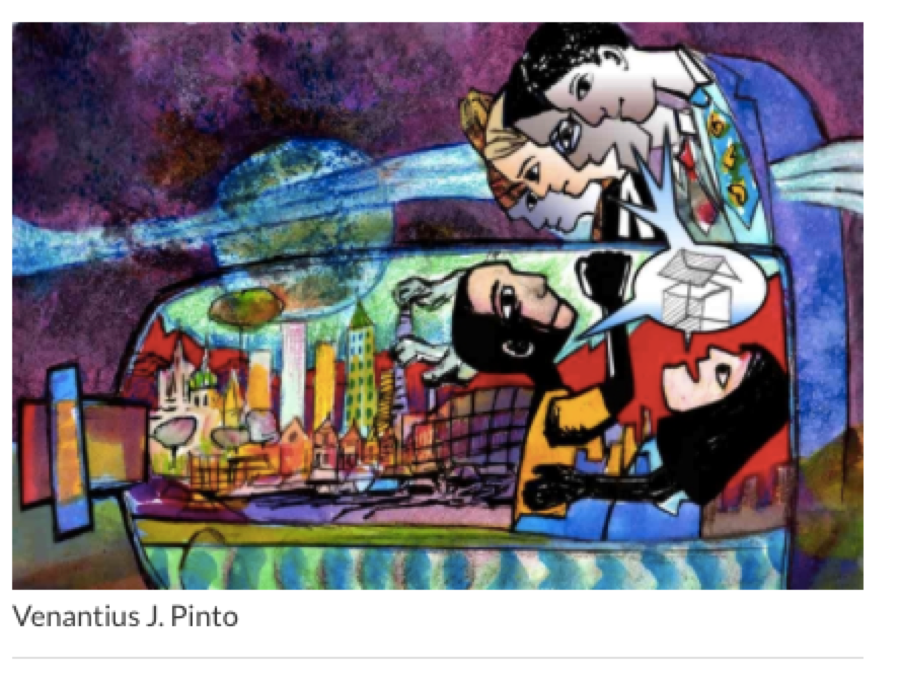
29 Aug Nihil Sub Sole Novum (There Is Nothing New Under the Sun)
How is man the better for all this toiling of his, here under the sun? Age succeeds age, and the world goes on unaltered. Sun may rise and sun may set, but ever it goes back and is reborn. Ecclesiastes 1:3-5
Parag Khanna, in his book, “Connectography”, talks about the global genetic dilution and the ‘perpetual circulation leading to ever more demographic blending.’ From this, as with many promoters of a single, global government, we are supposed to understand that this melding of people from everywhere will ultimately produce a world in which commutarianism will be the form of governance. All of these writers are ignoring the fact that the US, Western Europe, and other nations were built on Western Culture, which was derived from sources (Judeo-Christian religious traditions and Magna Carta among others) and that manifests itself through reason, logic, sound science, and the belief that individual freedom is a sacrosanct right.
These writers and statesmen that want us to believe that we must live in an interdependent world where everyone has equality not equal rights – a huge difference; where all countries must cede their sovereignty to the United Nations which would then rule the world with no responsibility to the constituents because there would be no voting – those at the top would name every official from the top down. They write and speak as if we must all be governed by one government entity. The world has functioned for centuries without a one world government; some countries have fared far better than others, but not because of lack of equality. It has been from lack of individual freedom that allows man to achieve great things. America thrived because of that freedom. Communists countries struggle because of the lack of that freedom. Why would America and other freedom loving countries want to be governed by a tyranny? It isn’t a scientific fact that the world must go to Commutarianism; in fact, that would be a travesty, but we could very well end up in that perversion if we don’t start looking at what is being said (and has been said/written for over 100 years).
Okay, I’m off the soapbox.
From the UN we learn that the cities are growing and need control over every aspect of life in them. Why are the cities growing? That is not addressed in these UN documents, but there are simple reasons that can be deduced by reading other UN Documents, i.e., Agenda 21/Sustainable Development and its concomitant document, the seven pound, Global Biodiversity Assessment. Agenda 21 is the blueprint of the goals of the UN and the Commutarian elite, while the GBA is the details of how the blueprint will be carried out.
Short and sweet, people are being moved into the cities in order to procure all the land needed (wanted) for the Wildlands Project (where no human will be allowed), and to have people in human settlements (their term) so that we are controllable.
Since 1976, when Habitat I, the Vancouver Declaration, spelled out for the first time what was envisioned for our world, those dedicated people of the UN, their NGOs (non-governmental organizations), and the “civil society” – stakeholders, MSM, and others who are aiding the destruction of individual freedom, have been working fulltime on these goals. Actually, this work started decades before Habitat I; it is just that Habitat I, spelled it out for us in simple language. You will see later in this article one of the early groups/religions that was working toward the same objective.
The NEW URBAN AGENDA
RETHINKING THE URBAN AGENDA IS:
- Embracing urbanization at all levels of human settlements, more appropriate policies can take advantage of urbanization across physical space, bridging urban, peri-urban and rural areas, and assist governments in addressing challenges through national and local development policy frameworks.
- Integrating equity to the development agenda. Equity becomes an issue of social justice, ensures access to the public sphere, extends opportunities and increases the commons.
- Fostering national urban planning and planned city extensions.
- Deciding how relevant sustainable development goals will be supported through sustainable urbanization.
- Aligning and strengthening institutional arrangements with the substantive outcomes of Habitat III, so as to ensure effective delivery of the new Urban Agenda
IMPLEMENTING THE URBAN AGENDA MEANS:
- Urban Rules and Regulations. The outcomes in terms of quality of an urban settlement is dependent on the set of rules and regulations and its implementation. Proper urbanization requires the rule of law.
- Urban Planning and Design. Establishing the adequate provision of common goods, including streets and open spaces, together with an efficient pattern of buildable plots.
- Municipal Finance. For a good management and maintenance of the city, local fiscal systems should redistribute parts of the urban value generated.
With the consideration of:
- National Urban Policies. These establish a connection between the dynamics of urbanization and the overall process of national development.
[Read more]
Citiscope, from whence the next piece comes, “ . . . seeks to fill some of the gap and act as a conduit of experimentation to public officials, administrators, and decision-makers of cities worldwide. We also aim to serve the broader world of problem solvers and change-makers in business, nonprofits, academia, neighborhoods, foundations and the media — anyone sharing a stake in the urban future.
“Citiscope uses the power of strong storytelling to build credibility and draw reader attention to the world’s most imaginative steps to build sustainable cities.”
In other words, MSM, so-called documentaries, UNEP, Hollywood, school textbooks, are in need of this civil society member to help promote the goals of Sustainable Development.
What is Habitat III?

“Habitat III also offered a potent opportunity for the international community at all levels to harmonize its understanding of the problems and opportunities posed by current trends in urbanization. This includes poverty, quality of life, environmental degradation, climate change and other concerns on the one hand, as well as the economic, social and creative boons provided by cities on the other. Global actors were able to use the run-up to Habitat III to work toward agreement on a broad and collective approach to start to both address and capitalize on these issues.
Habitat III was not be the first time that the world has gathered to consider and debate a collective approach to current trends impacting on towns, cities and other urban areas. Yet while such summits have taken place twice in the past, this third conference had a weight of responsibility and expectation never before experienced.
“Recent years have seen a historic shift in where the world’s communities are living and working. Starting around 2009, more people around the globe began living in urban rather than rural areas. Further, these trends are only picking up speed, with nearly three-quarters of the world’s population expected to live in towns and cities by the middle of this century.
“Given the problems of equity, energy consumption and environmental degradation that can already seem intractable in many urban areas, the effects of this shift are confounding for everyone. Cities occupy less than a tenth of the world’s land area yet they suck up three-quarters of all energy use. Metro areas also account for the vast majority of carbon emissions.
 “Further, historically high levels of inequality are today being felt most prominently in urban areas, where two-thirds of people are thought to experience worse inequity than they did two decades ago. [Read more]
“Further, historically high levels of inequality are today being felt most prominently in urban areas, where two-thirds of people are thought to experience worse inequity than they did two decades ago. [Read more]
Read this from Jo Hindman, written in 1967:
Public planning is not necessarily concerned with public projects. Contemporary planning is based on the legalized fallacy that public planners are empowered to lay plans for private property. It is not uncommon for city master-plan revisions to overthrow all prior planning work, including zoning. Present-day practice demands absolute conformity to the latest revision of a city’s master plan. This works a hardship upon property owners.
It is not easy to convert a teeming neighborhood into a blank land parcel readied for the large-scale urban renewal redeveloper. Yet the uneasy task is being done in the U.S.A. Detroit’s ‘Corktown’ was wiped out by city planners whose avowed purpose is increase of the tax take. On the spot formerly occupied by generations of Irish, buds a commercial ‘industrial park.’ Blame Metro, pp 40-41.
Principles for New Federal Infrastructure Investment Policy
From the American Planning Association,
A New Federal Infrastructure Program Should:
SERVE MULTIPLE MODES AND TYPES OF INFRASTRUCTURE
DRIVEN BY LOCAL VISIONS AND STRONG REGIONAL PLANNING
ADDRESS LONG-TERM FUNDING SUSTAINABILITY
HARNESS PRIVATE SECTOR INVESTMENT AND CREATIVITY TO ADVANCE AND PROTECT THE PUBLIC INTEREST
CONSIDER KEY FACTORS OF LOCATION AND LEVERAGE
PROMOTE ACCESS
ADVANCE OPPORTUNITY FOR ALL
EMBRACE AND SUPPORT INNOVATION
MAKE COMMUNITIES SAFER AND MORE RESILIENT
[Read more]
Take a look at the documentation under each of those headers. Sustainable Development 100%.
Two articles by Tom DeWeese re APA:
THE AMERICAN PLANNING ASSOCIATION AND ITS “FAULTY” HANDBOOK
LIES AND DOUBLESPEAK OF AMERICAN PLANNING ASSOCIATION AND HOW TO FIGHT BACK
And from the horse’s mouth, so to speak, some of the points from Habitat III. I recommend you read the whole document.
New Urban Agenda
Quito Declaration on Sustainable Cities and Human Settlements for All
5. By readdressing the way cities and human settlements are planned, designed, financed, developed, governed and managed, the New Urban Agenda will help to end poverty and hunger in all its forms and dimensions; reduce inequalities; promote sustained, inclusive and sustainable economic growth; achieve gender equality and the empowerment of all women and girls in order to fully harness their vital contribution to sustainable development; improve human health and well-being; foster resilience; and protect the environment.
9. The New Urban Agenda reaffirms our global commitment to sustainable urban development as a critical step for realizing sustainable development in an integrated and coordinated manner at the global, regional, national, subnational and local levels, with the participation of all relevant actors. The implementation of the New Urban Agenda contributes to the implementation and localization of the 2030 Agenda for Sustainable Development in an integrated manner . . ..
12. We aim to achieve cities and human settlements where all persons are able to enjoy equal rights and opportunities, as well as their fundamental freedoms, guided by the purposes and principles of the Charter of the United Nations, including full respect for international law. In this regard, the New Urban Agenda is grounded in the Universal Declaration of Human Rights, international human rights treaties, the Millennium Declaration and the 2005 World Summit Outcome. It is informed by other instruments such as the Declaration on the Right to Development.
13. We envisage cities and human settlements that:
(a) Fulfil their social function, including the social and ecological function of land, with a view to progressively achieving the full realization of the right to adequate housing as a component of the right to an adequate standard of living, without discrimination, universal access to safe and affordable drinking water and sanitation, as well as equal access for all to public goods and quality services in areas such as food security and nutrition, health, education, infrastructure, mobility and transportation, energy, air quality and livelihoods;
(e) Fulfil their territorial functions across administrative boundaries, and act as hubs and drivers for balanced, sustainable and integrated urban and territorial development at all levels;
14. (b) Ensure sustainable and inclusive urban economies, by leveraging the agglomeration benefits of well-planned urbanization, including high productivity, competitiveness and innovation; by promoting full and productive employment and decent work for all; by ensuring the creation of decent jobs and equal access for all to economic and productive resources and opportunities; and by preventing land speculation, promoting secure land tenure and managing urban shrinking, where appropriate;
(c) Ensure environmental sustainability, by promoting clean energy and sustainable use of land and resources in urban development; by protecting ecosystems and biodiversity, including adopting healthy lifestyles in harmony with nature; by promoting sustainable consumption and production patterns; by building urban resilience; by reducing disaster risks; and by mitigating and adapting to climate change.
15. We commit ourselves to working towards an urban paradigm shift for a New Urban Agenda that will:
(a) Readdress the way we plan, finance, develop, govern and manage cities and human settlements, recognizing sustainable urban and territorial development as essential to the achievement of sustainable development and prosperity for all;
(b) Recognize the leading role of national governments, as appropriate, in the definition and implementation of inclusive and effective urban policies and legislation for sustainable urban development, and the equally important contributions of subnational and local governments, as well as civil society and other relevant stakeholders, in a transparent and accountable manner;
(c) Adopt sustainable, people-centred, age- and gender-responsive and integrated approaches to urban and territorial development by implementing policies, strategies, capacity development and actions at all levels, based on fundamental drivers of change, including:
(i) Developing and implementing urban policies at the appropriate level, including in local–national and multi-stakeholder partnerships, building integrated systems of cities and human settlements, and promoting cooperation among all levels of government to enable them to achieve sustainable integrated urban development;
(ii) Strengthening urban governance, with sound institutions and mechanisms that empower and include urban stakeholders, as well as appropriate checks and balances, providing predictability and coherence in urban development plans to enable social inclusion, sustained, inclusive and sustainable economic growth, and environmental protection;
(iii) Reinvigorating long-term and integrated urban and territorial planning and design in order to optimize the spatial dimension of the urban form and deliver the positive outcomes of urbanization;
16. While the specific circumstances of cities of all sizes, towns and villages vary, we affirm that the New Urban Agenda is universal in scope, participatory and people centred; protects the planet; and has a long-term vision, setting out priorities and actions at the global, regional, national, subnational and local levels that governments and other relevant stakeholders in every country can adopt based on their needs. [Read more]
I have put this in numerous articles that I have written, but it is well worth reading.
Vancouver Declaration on Human Settlements, 1976
And, last but not least, Patrick Wood’s article on the religion of technocrats:
The Mind Of A Technocrat Is Rooted In The Religion Of Scientism
“Robert Putnam wrote in 1977 that there are six defining characteristics of a Technocrat:
1. Above all, the technocrat believes that technics must replace politics and defines his own role in apolitical terms… he has great confidence in the possibility of solving the problems of society by a scientific approach.
2. The technocrat is skeptical and even hostile toward politicians and political institutions.
3. The technocrat is fundamentally unsympathetic to the openness and equality of political democracy.
4. The technocrat believes that social and political conflict is, at best misguided, and at worst, contrived
5. The technocrat rejects ideological or moralistic criteria, preferring to debate policy in practical, “pragmatic terms.”
6. The technocrat is strongly committed to technological progress and material productivity: he is less concerned about distributive questions of social justice. (Putnam, 1977, “Elite Transformation in Advanced Industrial Societies”, Comparative Political Studies, 10, pp. 285-387)
“Nothing has changed.”
“By 1938, the Technocrats defined their own movement as “the science of social engineering, the scientific operation of the entire social mechanism to produce and distribute goods and services to the entire population.” (The Technocrat, 1939)
“Now, that was very far-reaching. It sought to control the entire social mechanism (the problem) to make and distribute goods and services to the entire population (the needed solution).
“Again, nothing has change: This is exactly what the UN’s Sustainable Development program seeks to do. [Read more]



